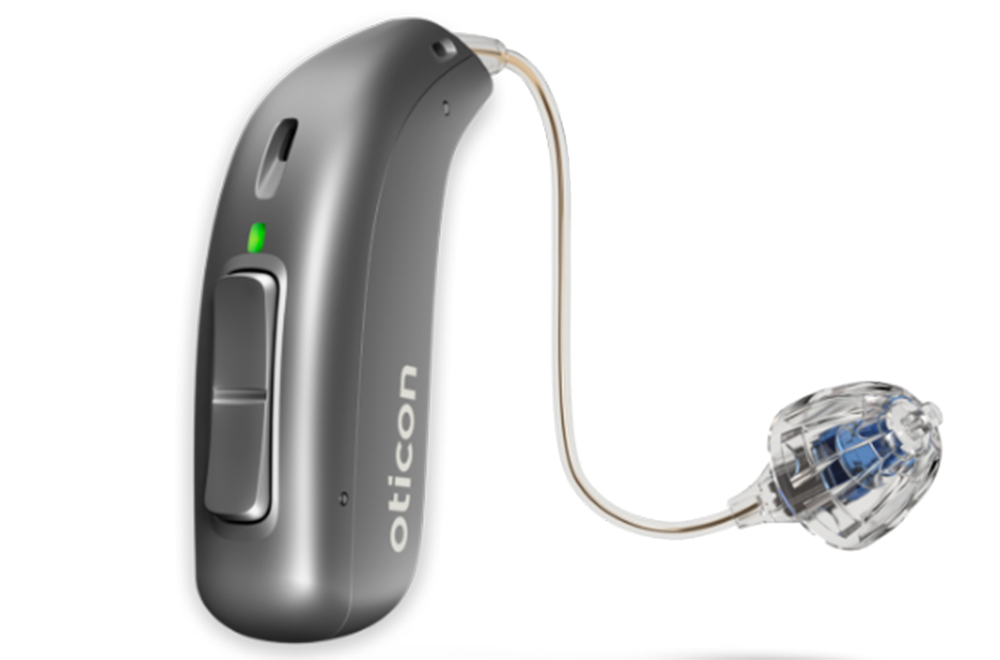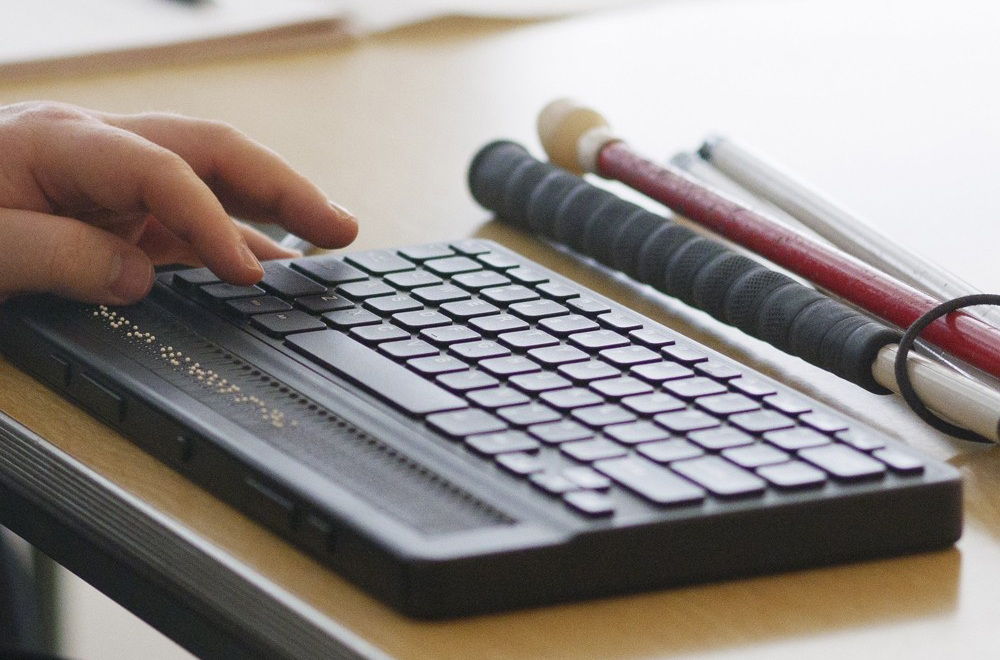CES 2021 was the biggest digital technology event in history and many of the next-generation products that were announced January have been developed to improve the lives of people with disability or impairments.
This year’s event also unveiled accessibility technology for the coronavirus era, with innovations such as redesigned hearing aids that are more conducive to mask use and social distancing.
Here are a few of the innovations that caught F2L’s attention.
The Mantis Q40, pictured, claimed to be the the first Bluetooth keyboard with a 40-cell refreshable braille display was released at CES by HumanWare. The refreshable braille below the keyboard provides a multimodal braille complement to the screen reader, making it easier to participate in school or at work. It can be paired with a screen reader, laptop or smartphone and used on-the-go as an autonomous all-in-one braille reader and notepad. The onboard memory and Editor application enable making, saving and sharing quick notes on the move while the Book Reader application allows for opening and reading work documents, school assignments or the latest novel.
Samsung announced updates to its TV range that includes more accessible features for people who are vision or hearing impaired. Samsung QLED and Neo QLED TVs include Caption Moving that avoids blocking other text on a video and Sign Language Zoom for seeing menu options more clearly.
While local release dates are still to be confirmed a Samsung spokesperson told F2L it would be soon. Samsung said by 2022 it is committed to expanding Voice Guide that provides audio guidance for people who are deaf or have low vision and will continue to develop artificial intelligence (AI) based features to enhance accessibility to Samsung TVs in the future.
For those who struggle with text on a printed surface or digital screen because of vision impairment, dyslexia, or just eye fatigue the OrCam read might assist. A pen-sized, wireless and lightweight device with an intuitive point-and-click operation it does not require an internet connection, making it usable anywhere.
The technology is easy to use and allows users to speed up or slow down audio playback. It can either read aloud, or be connected to audio devices via Bluetooth or headphones. The amount of text read aloud by the device can be chosen by easily changing the laser focus, which has two settings for smaller or larger texts.
Face masks and social distancing have made hearing harder than ever. Starkey custom hearing aids have been designed to avoid getting tangled or pulled off when wearing or removing face masks. Starkey Edge Mode technology available in its Livio Edge AI devices deliver an on-demand boost for speech audibility with just a tap of hearing aids and automatically optimises for social distancing and background noise.
Another hearing device, the Oticon More was also released at CES by Oticon, pictured. The world’s first hearing aid with an on-board deep neural network (DNN), it is said to deliver a more natural representation of all sounds allowing wearers to more easily understand speech, with less effort and remember more. The hearing aid supports direct streaming from an iPhone, iPad and compatible Android devices.
Finally, if its pure air you are after then the LG PuriCare Wearable Air Purifier offers portable protection for these Covid times. It uses HEPA filters and has a respiratory sense that detects breathing cycle and volume. The wearable is made from replaceable parts including disposable filters and has a washable face pad. Local availability is still to be determined.


